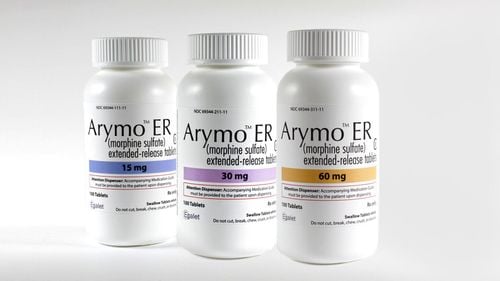This is an automatically translated article.
Fentanyl is an opioid pain reliever, commonly used after surgery. The drug has the same function as Morphine but is 100 times more effective. Patients are only allowed to use Fentanyl with a prescription from a doctor.
1. Uses of Fentanyl
Fentanyl is also known as Fentanyl Citrate, Sublimaze, Actiq, Duragesic, Fentora and Matrifen. For patients who have never used opioids from 0.3-1.ng/ml, the serum concentration for pain relief is effective. When drug concentration reaches 72ng/ml, side effects increase with frequency.
Drugs that are effective in providing strong pain relief require the use of opioid analgesics. Fentanyl is used to relieve pain during and after surgery (respiratory support is required), to support anesthesia and mechanical ventilation in resuscitation, in combination with anesthetics inserted into the epidural and spinal cord.
Fentanyl is used in hospitals mainly as an injection or intravenous infusion. In the event that a patient needs to receive an intravenous dose of pain medication, they simply press a button.
For patients who are not in the hospital, the doctor may prescribe a skin patch. Cancer patients, will be advised to use an Actiq candy.
However, Fentanyl is a strong pain reliever, many patients will not be eligible to apply Fentanyl skin or use Actiq candy, because this form of Fentanyl is only suitable for patients who tolerate Fentanyl well or tolerate pain medications well. other opioids.

Không phải bệnh nhân nào cũng đủ điều kiện để sử dụng thuốc Fentanyl
Users will experience some side effects related to opioid drugs such as: constipation, dry mouth, dizziness, drowsiness, slow heart rate, drowsiness, headache, confusion, hallucinations, euphoria , itching, sweating and urinary retention.... The most serious side effect is hypoventilation.
Some patients will experience a skin reaction but it is usually not serious, which usually resolves within 24 hours after removing the patch such as: redness, erythema.
2. Dosage
When using Fentanyl, it is necessary to pay attention to the route of use and the purpose of use, because Fentanyl is a very strong drug.
2.1 For patches Adults when using patches need to be based on each person's physical condition. When using the drug for the starting dose, patch size should be chosen based on the patient's opioid history. If the patient has never used opioids, the recommended dose is at least 25 mcg/hour. If the patient is already taking opioids, flexibility should be given to switching from oral or injectable opioids to Fentanyl.
For children who are already opioid-tolerant when using the patch, a minimum dose of 45mg morphine/day is indicated.

Người bệnh sử dụng miếng dán theo đúng liều lượng bác sĩ chỉ định
Some notes when using Fentanyl patches:
Fentanyl paste surface is non-irritating, flat skin such as: chest, back,... Clean the skin area before applying such as: trimming hair, washing with water...then let the skin dry. Do not use alcohol, oil, or soap solutions to clean the area where the Fentanyl patch is to be applied. Use the patch immediately after unpacking. To make sure the patch is firmly attached, especially around the edge, it is necessary to press the patch for about 30 seconds. To avoid uncontrolled release of fentanyl, it should not be destroyed by any means after use. To cancel, simply fold the two sides together and destroy. 2.2. Solution for Injection The pre-anesthetic dose for adults is 50-100 micrograms by slow intravenous injection. For children, it is 3-5 micrograms/kg then 1 microgram/kg if needed. Anesthesia adjunctive dose: If the patient is breathing on their own, the intravenous dose is 50-200 micrograms then 50 micrograms if needed after 30 minutes. . Initial dose 300 – 3500 micrograms (up to 50 micrograms/kg), then add 100-200 micrograms from time to time depending on response if respiratory support. For children, the required dose is 15 micrograms/kg, then 1-3 micrograms/kg when needed. Use analgesia after surgery for adults is 50-200 micrograms / hour (or electric syringe) and children is 3-5 micrograms / kg then 1 microgram / kg

Dung dịch Fentanyl được tiêm trực tiếp vào tĩnh mạch
3. Caution
Note Fentanyl is not effective in the management of acute and postoperative pain. When any side effects occur after removing the patch, the patient should be monitored for 24 hours. Patients may experience respiratory distress after the patch is removed. Fentanyl may increase respiratory depression caused by drugs that affect the central nervous system. Patients can develop chronic lung disease when using Fentanyl. Drug addiction. Patients with brain tumors should be careful when using the drug, because the drug can increase intracranial pressure. Therefore, for these cases, it is necessary to get the consent of the doctor to use it. Patients with heart disease also need to be careful when using the drug. The drug should be limited to patients with liver disease and kidney disease. Fentanyl may affect the patient's ability to drive and use machines. Pregnant and nursing women should not take Fentanyl because it is excreted in breast milk, which will affect the baby. The elderly and children also need to be careful when using the drug. Fentanyl can cause interactions with certain other medications. Therefore, to ensure safety for your health and avoid experiencing some unwanted side effects, please list a list of drugs and supplements you are using to your doctor. From there, the doctor will find the right treatment method.
Customers can directly go to Vinmec Health system nationwide to visit or contact the hotline here for support.













